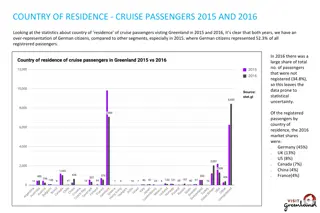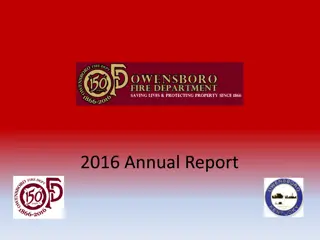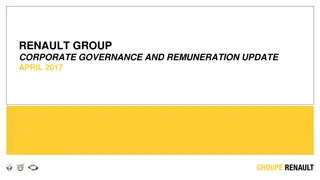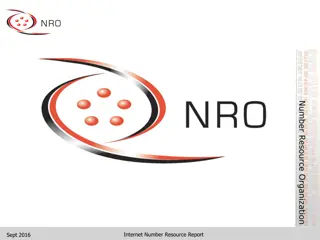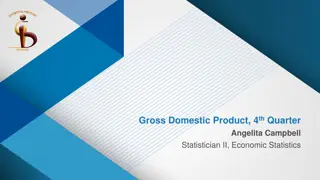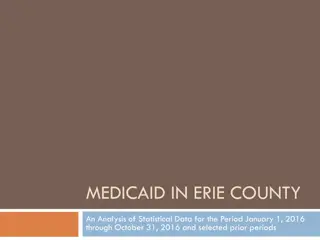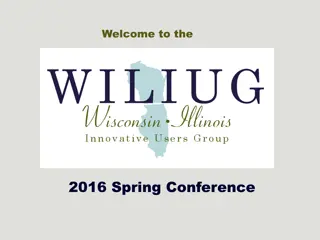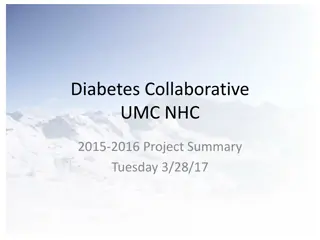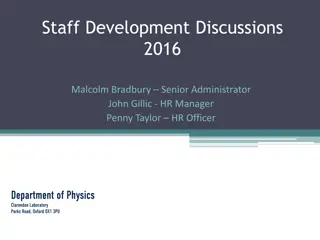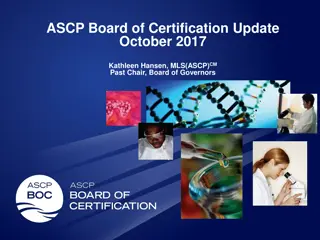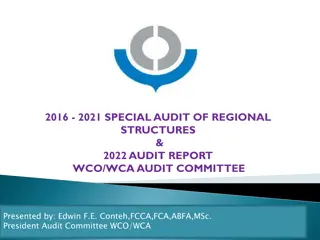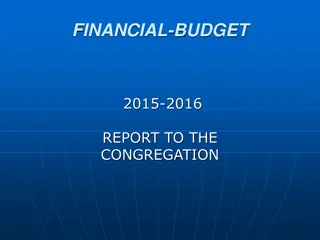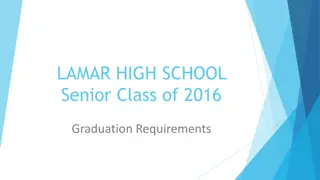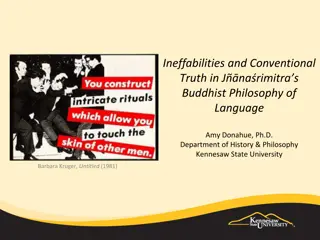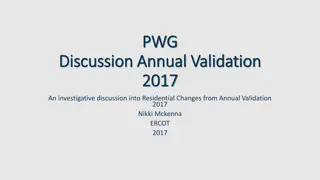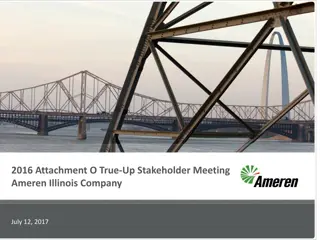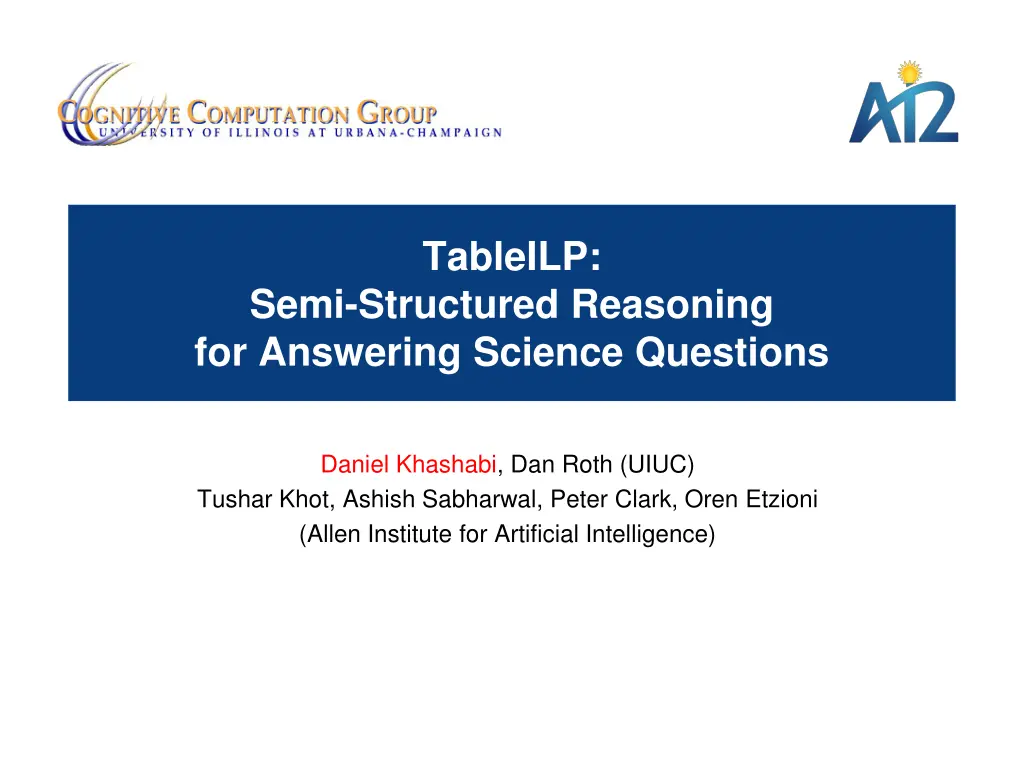
Structured Reasoning for Answering Science Questions with TableILP
Discover how TableILP leverages semi-structured reasoning to answer science questions, such as determining the longest period of daylight in New York State. Explore the concept of relational tables for knowledge acquisition and inference to enable explainable answers robust to variations.
Uploaded on | 1 Views
Download Presentation

Please find below an Image/Link to download the presentation.
The content on the website is provided AS IS for your information and personal use only. It may not be sold, licensed, or shared on other websites without obtaining consent from the author. If you encounter any issues during the download, it is possible that the publisher has removed the file from their server.
You are allowed to download the files provided on this website for personal or commercial use, subject to the condition that they are used lawfully. All files are the property of their respective owners.
The content on the website is provided AS IS for your information and personal use only. It may not be sold, licensed, or shared on other websites without obtaining consent from the author.
E N D
Presentation Transcript
TableILP: Semi-Structured Reasoning for Answering Science Questions Daniel Khashabi, Dan Roth (UIUC) Tushar Khot, Ashish Sabharwal, Peter Clark, Oren Etzioni (Allen Institute for Artificial Intelligence)
In New York State, the longest period of daylight occurs during which month? (A) June (B) March (C) December (D) September Premise: a system that understands this phenomenon can correctly answer many variations! 2
Semi-Structured Inference In New York State, the longest period of daylight occurs during which month? (A) June (B) March (C) December (D) September New York New Zealand Longest Day Shortest Day Shortest Night Structured, Multi-Step Reasoning science knowledge in small, manageable, swappable pieces: regions, hemispheres, solstice Goal: overcome brittleness Northern Hemisphere Hemisphere Southern Summer Solstice Solstice Winter month? principled approach, explainable answers robust to variations (A) June (C) Dec How can we achieve this? 3
Knowledge as Relational Tables Unstructured Structured e.g., free form text from books, web e.g., probabilistic first-order logic rules, ontologies Relational Tables with free form text easy to acquire, difficult to reason with easy to reason with, difficult to acquire collections of recurring, related, science concepts Energy, Forces, Adaptation, Phase Transition, Organ Function, Tools, Units, Evolution, Simple structure, flexible content Can acquire knowledge in automated and semi-automated ways 4
TableILP: Main Idea Search for the best Support Graph connecting the Question to an Answer through Tables. Cities, States, Countries Orbital Events: How is relevant information expressed in my KB? Geographical properties & Timing Potential Link: Regions and Hemispheres 5
TableILP: Main Idea Search for the best Support Graph connecting the Question to an Answer through Tables. 6
TableILP: Main Idea Search for the best Support Graph connecting the Question to an Answer through Tables. 7
TableILP Solver: Overview A discrete constrained optimization approach to QA for multiple-choice questions for each given question and candidate answers, we automatically generate a corresponding ILP objective and a set of constraints. Question Q with answer options A M(T,Q,A) ILP model builder ILP engine Knowledge Tables T Alignment component ai A with support graph + score Word and short-phrase level entailment / similarity Optimization using Integer Linear Prog. formalism M(T,Q,A) 8
Approach: Integer Linear Program (ILP) Model Goal: Design ILP constraints C and objective function F, s.t. maximizing F subject to C yields a desirable support graph Variablesdefine the space of support graphs Which nodes + edges between lexical units are active? Objective Function: better support graphs = higher objective value Reward active units, high lexical match links, column header match, Penalize spurious overuse of frequently occurring terms Constraints ~50 high-level constraints Basic Lookup, Parallel Evidence, Evidence Chaining, Semantic Relation Matching Examples: connectedness, question coverage, appropriate table use 9
Evaluation 4th Grade NY Regents Science Exam Focus on non-diagram multiple-choice (4-way) 129 questions in completely unseen Test set 6 years of exams; 95% C.I. = 9% Score: 1 point per question (1/k for k-way tie including correct answer) Baselines: IR Solver: Information Retrieval using Lucene search Using 280 GB of plain text (50B tokens) waterloo corpus [AAAI, 2015] IR Solver(tables): Using same tables as TableILP PMI Solver: Statistical correlation using pointwise mutual info. Using 280 GB of plain text (50B tokens) waterloo corpus [AAAI, 2015] MLN: Markov Logic Network, a structured prediction model Using rules from 80K sentences [EMNLP, 2015] 10
Results: Same Knowledge TableILP is substantially better than IR & MLN, when given knowledge derived from the same, domain-targeted sources 11
Results Ensemble performs 8-10% higher than IR baselines Simple logistic regression. Features: [Clark et al, AAAI-2016] 4 from each solver s score 11 from TableILP s support graph (#rows, weakest edge, ) 12
Conclusions TableILP: Semi-structured reasoning can be very effective Beyond IR Just starting to scratch the surface! Code: https://github.com/allenai/tableilp Ongoing efforts + future extensions Scaling up to medium/large scale KB Automated parameter tuning / learning Improved semantics (better question interpretation, negations, 13
EXTRA SLIDES 14
Knowledge as Relational Tables The Knowledge Atlas: 12 key sections Celestial Phenomena sun moon stars day/night, rotation revolution Matter takes up space and has mass. Two objects cannot occupy the same place at the same time. Matter has properties (color, hardness, odor, sound, taste, etc.) that can be observed through the senses. Objects have properties that can be observed, described, and/or measured: length, width, volume, size, shape, mass or weight, temperature, texture, flexibility, reflectiveness of light. Measurements can be made with standard metric units and nonstandard units. The material(s) an object is made up of determine some specific properties of the object (sink/float, conductivity, magnetism). Properties can be observed or measured with tools such as hand lenses, metric rulers, thermometers, balances, magnets, circuit testers, and graduated cylinders. Objects and/or materials can be sorted or classified according to their properties. Some properties of an object are dependent on the conditions of the present surroundings in which the object exists. For example: temperature - hot or cold; lighting - shadows, color; moisture - wet or dry Describe chemical and physical changes, including changes in states of matter. Matter exists in three states: solid, liquid, gas. Solids have a definite shape and volume Liquids do not have a definite shape but have a definite volume. Gases do not hold their shape or volume Temperature can affect the state of matter of a substance. Changes in the properties or materials of objects can be observed and described. The Earth Matter Energy forms energy transfer heat electricity chemical energy energy conversion solid/liquid/gas properties conductivity texture temperature measuring tools air water land weather precipitation erosion Living things living nonliving characteristics animals plants fish Matter EXAMPLE TABLES FOR THIS TOPIC Forces Inheritance inherited traits resemblance acquired traits learned traits body features skills The Environment and Adaptation senses habitats behavior camouflage survival Human Impact human activities environment ecosystem pollution conservation deforestation gravity magnetism force friction pull/pushing attraction ENTITY ADDITIONAL RULES COLOR PHASE TRANSITION (for example) If X s material conducts E, then X conducts E made-of(X,M), conducts(M,E) conducts(X,E) FROM TO USING MATERIAL COLOR CONDUCTIVITY HARDNESS Interdependence food web producers consumers decomposers predators prey UNIT OF MEASURE Life Functions breathing growing eating food air water Continuity of Life life cycle life span offspring reproduction coloration mating TOOL MEASURES PHASE DEFINITE SHAPE DEFINITE VOLUME PROPERTY
Relation Involving Which Objects? states body parts Grouping of ~2500 key terms related to 4th grade science actions attributes manner locations materials units comparatives humans insects numbers time birds directions animals time s h a p e s objects (inanimate) values senses tools fish process es colors plants substances behavior s plant parts vehicles c l o t h e s roles positions qualities sounds food weather illness spatial temperat ures sizes
Semi-Structured Inference: Challenge #2 Reasoning: effective, controllable, scalable RULE solver [AKBC 2014] MLN solver [EMNLP 2015] forward chaining of logic rules approx. inference with probabilistic first-order logic Integer Linear Programming (ILP) framework Pros: easy to understand behavior (state space) Pros: natural fit, high-level specification constraints and preferences, industrial-strength solvers Cons: focuses on how to search rather than what to look for Cons: inefficient, difficult to control, brittle with noisy input 17
Evaluation: Ablation Study Key components of the TableILP system contribute substantially to the eventual score 18
Aristo: Ensemble Approach [AAAI-2016] 19
Three Takeaways AI2: exciting place for cutting-edge AI research and engineering! 1. Standardized exams (science, math, ): great test beds for pushing AI & assessing progress Super-interesting, challenging, measurable Just starting to scratch the surface! 2. Semi-structured inference can be very effective & robust on these tests Goes beyond factoid-style QA Complementary to IR 1. + 20
Aristos Tablestore ~85 tables, ~10k rows, ~30k cells Defined with respect to questions, study guides, syllabus
ILP Complexity, Scalability ~50 high-level constraints Speed: 4 sec per question, reasoning over 140 rows across 7 tables Contrast: 17 sec for MLN using only 1 rule per answer option! Commercial ILP engines (Gurobi, Cplex) much faster than SCIP 22
ILP Model question chunks c Operates on lexical units of alignment cells + headers of tables T question chunks Q answer options A tables ~50 high level constraints + preferences Variablesdefine the space of support graphs connecting Q, A, T Which nodes + edges between lexical units are active? Objective Function: better support graphs = higher objective value Reward active units, high lexical match links, column header match, WH-term boost (which form of energy), science-term boost (evaporation) Penalize spurious overuse of frequently occurring terms 23
ILP Model: Constraints Dual goal: scalability, consider only meaningful support graphs Structural Constraints Meaningful proof structures connectedness, question coverage, appropriate table use parallel evidence => identical multi-row activity signature Simplicity appropriate for 4th / 8th grade Semantic Constraints Chaining => table joins between semantically similar column pairs Relation matching (ruler measures length, change from water to liquid) Table Relevance Ranking TF-IDF scoring to identify top N relevant tables 24
Assessing Brittleness: Question Perturbation How robust are approaches to simple question perturbations that would typically make the question easier for a human? E.g., Replace incorrect answers with arbitrary co-occurring terms In New York State, the longest period of daylight occurs during which month? (A) eastern (B) June (C) history (D) years 25
Results: Exploiting Structured Knowledge TableILP is substantially better than IR & MLN, when given knowledge derived from the same, domain-targeted sources [EMNLP-2015] Best of 3 MLN approaches: A. First-order rules as is Convenient, natural Slow, despite a few tricks B. Entity Resolution based MLN Probabilistic SameAs predicate Much faster, but brittle low recall C. Customized MLN: controlled search for valid reasoning chains More controllable, more robust, more scalable (but still very limited) 26
Standardized Tests as an AI Challenge Build AI systems that demonstrate human-like intelligence by passing standardized science exams as written Many challenges: broad knowledge (general and scientific), question interpretation, reasoning at the right level of granularity, Which physical structure would best help a bear to survive a winter in New York State? (A) big ears (B) black nose (C) thick fur (D) brown eyes 27
Two Approaches to Question Answering In New York State, the longest period of daylight occurs during which month? (A) June (B) March (C) December (D) September Premise: a system that understands this phenomenon can correctly answer many variations! Sophisticated physics model of planetary movement powerful model, would enable complex reasoning difficult to implement, scale up, or learn automatically Information retrieval / statistical association easy, generalizes well, often effective limited to simple reasoning expects answers explicitly written somewhere 28

